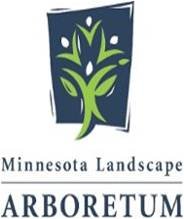
In 1958, the Minnesota Landscape Arboretum was a little-known horticultural research station sitting on 160 acres of remote marshland.
Today, 50-plus years later, the Arboretum has blossomed into an international research center and cultural destination that contributes to the horticultural, economic, and intellectual lives of people all over the world. Named as one of the "10 great places to smell the flowers" in America by USA Today, the Arboretum boasts 24,775 member households, 856 volunteers and more than a 402,619 visitors each year. With its 1,200+ acres, 28 gardens, 18 displays and model landscapes and 45 plant collections and more than 5,000 plant species and varieties, the Arboretum has become one of the premier horticultural field laboratories and public display areas in the country, reaching out as a living, vibrant extension of the University of Minnesota.
From its interactive displays of Minnesota's natural environment to the scores of plant labels designed to allow visitors to replicate favorite gardens at home, the Arboretum is a kinetic wellspring of education, research and inspiration.
Mission: The mission of the Minnesota Landscape Arboretum, as part of the University of Minnesota, is to provide a community and a national resource for horticultural and environmental information, research and public education; to develop and evaluate plants and horticultural practices for cold climates; and to inspire and delight all visitors with quality plants in well-designed and maintained displays, collections, model landscapes and conservation areas.
Research: Research at the Arboretum's Horticultural Research Center has taken on global significance as it continually develops improved, hardy strains of fruits and woody plants. Since its inception in 1908, the Horticultural Research Center (HRC) has been a strong contributor to Minnesota's "green" industry, generating more than 103 fruit introductions, many of them internationally known and in demand. The Arboretum's heritage as a trendsetter in plant research began in the early 1900s when the researchers' singular task was to develop apple varieties that could survive in Minnesota's subzero temperatures. Over the last century, the HRC has emerged as the center of fruit research for the upper Midwest with connections throughout the United States, as well as in Europe and Asia.
While apple breeding remains the cornerstone of the research program, home gardeners, nursery professionals and commercial fruit growers have benefited from Arboretum plant introductions such as ‘Northwood' Red Maple, ‘Northern Sun' Forsythia, selections in the ‘Northern Lights' Azalea series, and the many varieties of hardy apples, blueberries, plums, apricots, pears, raspberries and strawberries.
Today, the HRC encompasses 230 acres and continues as a research arm of the Arboretum and the University of Minnesota's Department of Horticultural Science.
The Arboretum's Spring Peeper Meadow Wetlands Restoration Project (SPM) is bringing back to life a sedge meadow as it develops model prairie wetlands restoration landscapes. Originally slated to become an industrial park, Spring Peeper Meadow was acquired by the Arboretum in 1995. The 30-acre project is the country's first restoration of a sedge meadow on a tiled cornfield.
Because restoring a wetland is an incredibly long process, long-term data for inland wetlands simply doesn't exist. Dr. Sue Galatowitsch and her team are working to change that as they gather data on everything from birds and amphibians to soil chemistry and temperature.
A site for cutting-edge data collection, SPM is also a groundbreaking project designed to demonstrate techniques used to effectively restore biodiversity in urban wetlands. Private and public agencies from around the country can turn to SPM for a model they can replicate in their own communities.
Education: The award-winning Marion Andrus Learning Center creates educational experiences for children, teachers, and families, and is at the heart of the Arboretum's mission. Children's educational programs reach about 50,000 students and teachers each year through school field trips, an Urban Gardening program and the popular Plantmobile.
The Minnesota Landscape Arboretum, the largest public garden in the Upper Midwest and a premier northern arboretum, is part of the College of Food, Agricultural and Natural Resource Sciences at the University of Minnesota and developed as a community and national resource for horticultural and environmental information, research, and public education.